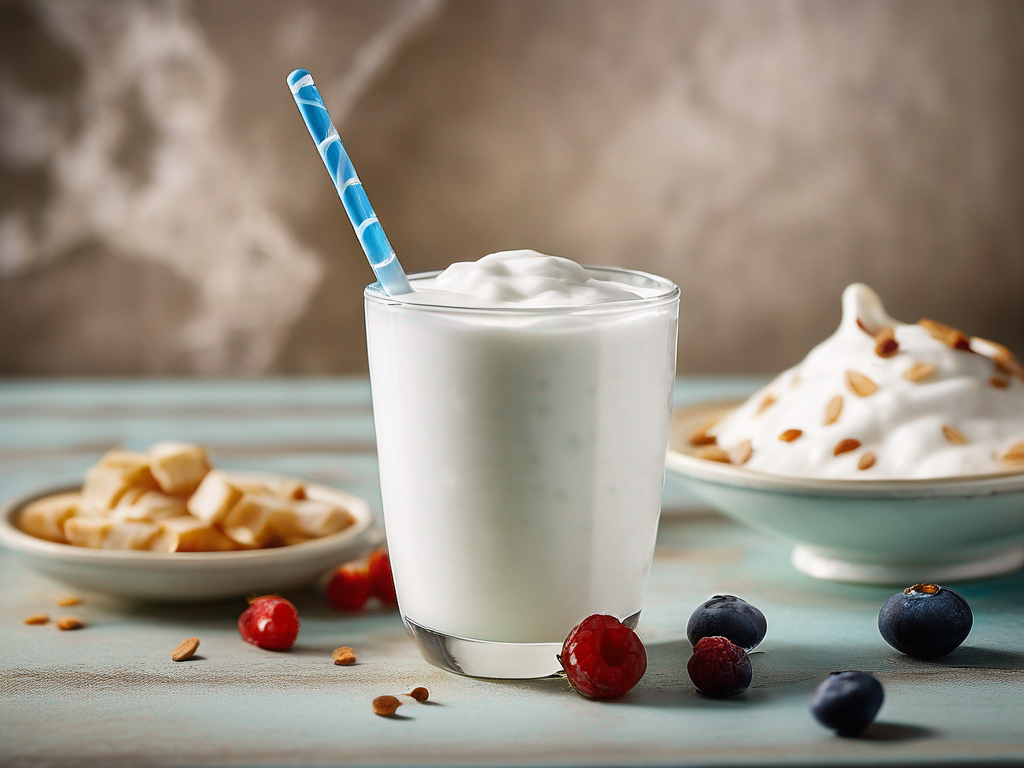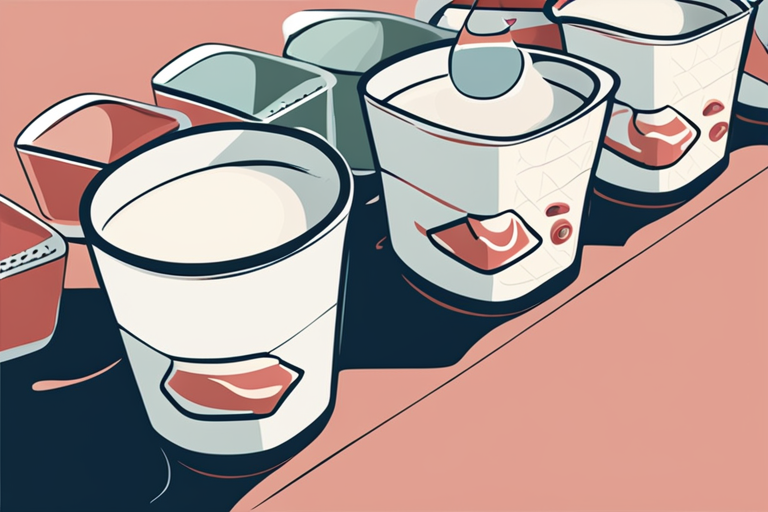
Signs that Ayran Turkish Yogurt Drink Has Gone Bad
Get Your Free Food Safety Cheat Sheet
30 most common foods with instant answers. Print it and stick it on your fridge—completely free!
Signs that Ayran Turkish Yogurt Drink Has Gone Bad
Ayran, a popular Turkish yogurt drink, is a refreshing and nutritious beverage enjoyed by many. Made from a combination of yogurt, water, and salt, Ayran is a staple in Turkish cuisine. However, like any dairy product, Ayran can spoil if not stored or handled properly. In this blog post, we will explore the signs that indicate Ayran has gone bad and provide tips on how to ensure its freshness and safety. (Ayran turkish yogurt drink)
Understanding Ayran Turkish Yogurt Drink
Ayran is a traditional Turkish beverage that has been consumed for centuries. It is a simple yet delicious drink made by mixing yogurt with water and salt. Ayran is known for its tangy flavor and creamy texture, making it a popular choice to accompany meals or as a refreshing drink on a hot day. Rich in probiotics and other nutrients, Ayran is not only tasty but also offers various health benefits.
Ingredients in Ayran Turkish Yogurt Drink
Ayran is typically made from the following ingredients:
- Yogurt: Plain yogurt, preferably made from whole milk, is the primary ingredient in Ayran.
- Water: Purified water is used to dilute the yogurt and achieve the desired consistency.
- Salt: A small amount of salt is added to enhance the flavor of Ayran.
How Ayran is Made
To make Ayran, simply mix yogurt, water, and salt in a blender until smooth and frothy. The drink is then served chilled and can be garnished with fresh herbs or a sprinkle of sumac for added flavor.
Signs that Ayran Has Gone Bad
While Ayran is a delicious and nutritious beverage, it is essential to know the signs that indicate it has gone bad. Consuming spoiled Ayran can lead to foodborne illnesses and should be avoided. Here are the key signs to look out for:
1. Foul Odor
- Normal: Ayran should have a slightly tangy aroma due to the yogurt.
- Spoiled: If Ayran smells sour, rancid, or generally unpleasant, it may have gone bad.
2. Unusual Texture
- Normal: Ayran has a smooth and creamy texture.
- Spoiled: If you notice lumps, curdling, or separation in the drink, it is a sign that the Ayran has spoiled.
3. Off-putting Taste
- Normal: Ayran has a tangy and slightly salty taste.
- Spoiled: If Ayran tastes sour, bitter, or off, it is best to discard it.
4. Mold Growth
- Spoiled: Visible mold growth on the surface of Ayran indicates spoilage and consumption should be avoided.
5. Changes in Color
- Normal: Ayran is typically white or off-white in color.
- Spoiled: Any discoloration, such as yellowing or browning, may indicate that the Ayran has gone bad.
Tips for Storing Ayran
To prolong the shelf life of Ayran and maintain its freshness, follow these storage tips:
- Refrigerate Promptly: Store Ayran in the refrigerator at all times, especially in hot weather.
- Use Clean Utensils: Always use clean utensils and containers when preparing and serving Ayran to prevent contamination.
- Check Expiry Date: If you purchase Ayran from a store, check the expiry date before consuming.
- Avoid Temperature Fluctuations: Keep Ayran away from temperature fluctuations and direct sunlight to prevent spoilage.
- Consume Fresh: Ayran is best consumed fresh within a few days of preparation for optimal taste and quality.
Conclusion
In conclusion, Ayran is a delicious and nutritious Turkish yogurt drink that can enhance your meals and provide health benefits. By being aware of the signs that indicate Ayran has gone bad and following proper storage practices, you can enjoy this refreshing beverage safely. Remember to trust your senses, such as smell, taste, and appearance, when determining the freshness of Ayran. Stay vigilant, and enjoy your Ayran worry-free!
For more information on Ayran Turkish yogurt drink, visit here. (Ayran turkish yogurt drink)

Authoritative Food Safety References
These agencies and university labs inform every tip and health precaution we publish.
USDA FoodKeeper – Cold Storage Guidelines
Official refrigerator, freezer, and pantry timelines maintained by the U.S. Department of Agriculture.
Visit USDA FoodKeeperFDA Produce Safety Rule & Grower Guidance
Field-to-fridge handling practices that prevent contamination of fruits, vegetables, and leafy greens.
Visit FDA Produce SafetyCDC Foodborne Illness Prevention Hub
Surveillance-backed guidance on pathogens, symptoms, and steps to reduce foodborne illness risk.
Visit CDC Food SafetyUC Davis Postharvest Technology Center
University research detailing optimal storage atmospheres for produce after harvest.
Visit UC Davis PostharvestPenn State Extension – Home Food Preservation & Safety
Peer-reviewed extension bulletins on safe canning, chilling, and reheating practices.
Visit Penn State ExtensionCan I still consume Ayran Turkish yogurt drink after the expiration date?
How should Ayran Turkish yogurt drink be stored to prolong its shelf life?
Can Ayran Turkish yogurt drink be frozen for later consumption?
Are there any health risks associated with consuming spoiled Ayran Turkish yogurt drink?
Get Your Free Food Safety Cheat Sheet
30 most common foods with instant answers. Print it and stick it on your fridge—completely free! Want more? Upgrade to the complete guide with 70+ foods.
Scan your food directly and get instant safety info using our AI-powered camera feature.